| |
|
|
| |
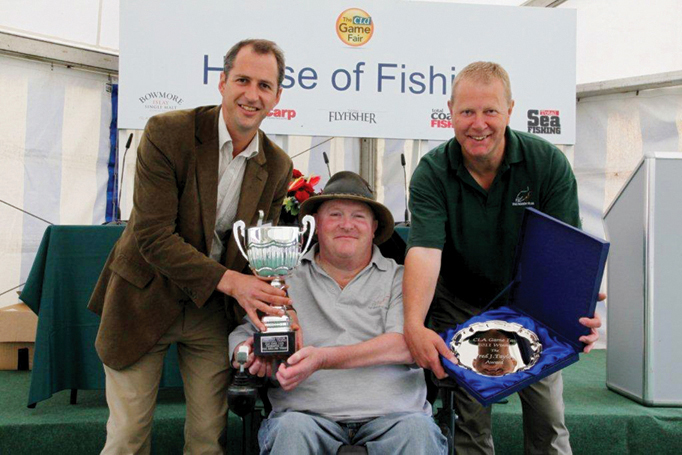 |
|
| |
In July we went to The CLA Game Fair at Blenheim Palace to collect our Fred J Taylor Environmental Stewardship Award. It was presented to us by Mark Lloyd, Chief Executive of The Angling Trust. We were delighted to have been chosen over all the other applicants in the country and honoured to receive the award and, most importantly for the project, a cheque for one thousand pounds.
|
|
| |
 |
|
| |
|
|
| |
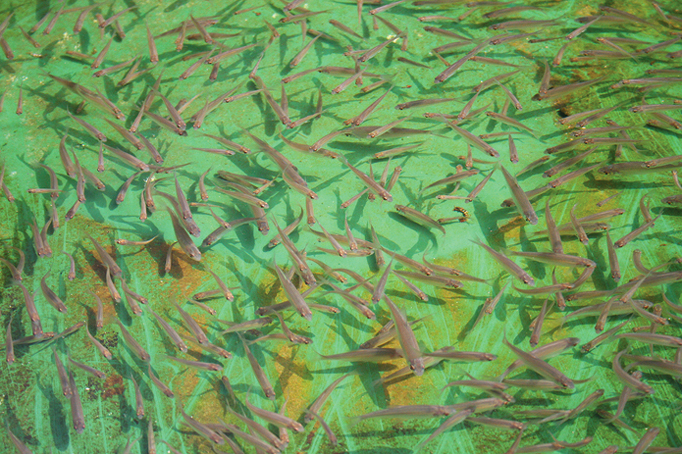 |
|
| |
Just as last year, March sees the tanks drained down and the one year olds ready to be moved to holding lagoons. This lot are destined for Downton. The tanks are then cleaned, disinfected and refilled ready for the next lot of spawn, and so the cycle starts again. |
|
| |
 |
|
| |
|
|
| |
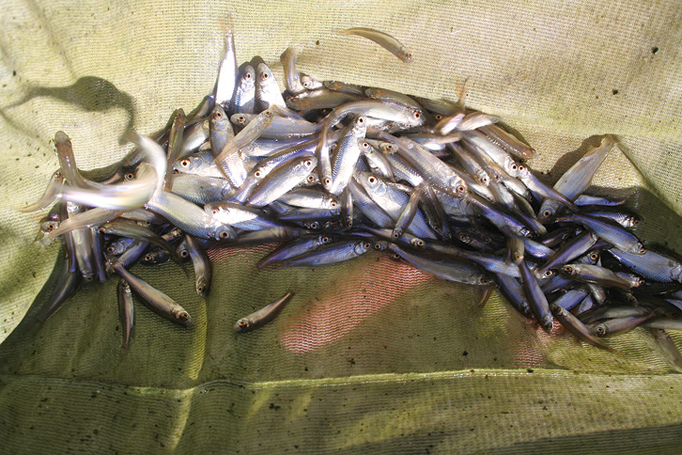 |
|
| |
A scoop of beautiful, perfect one year old Avon Roach ready for the next stage in their role in this remarkable story. The size differences are again quite noticeable, and the very small ones we feel sure will succumb to predation in the stews from beasties such as dragon fly nymphs and even water boatman. The vast majority though, will survive.
|
|
| |
 |
|
| |
|
|
| |
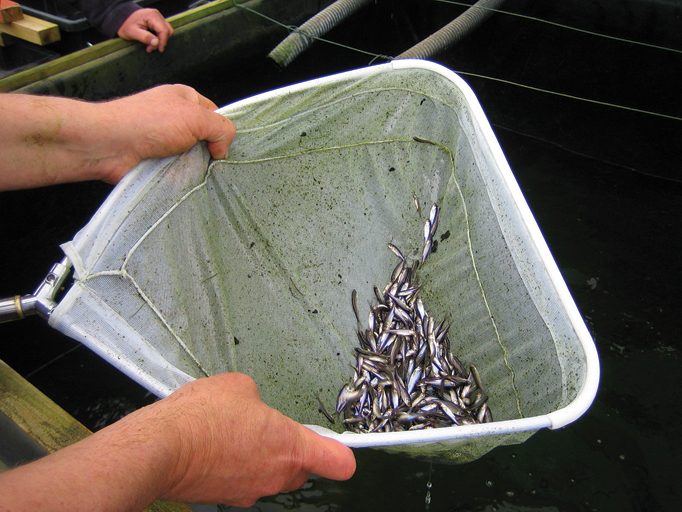 |
|
| |
One of the things we have established without a shadow of a doubt this year as a key part of the growth rate of some and the reduction of numbers of survivors compared with the number of eggs that hatch is cannibalism. We have seen them actually eating each other. It is rife elsewhere in nature, especially in the aquatic world, so shouldn’t really have come as that much of a surprise to find our own joining in. But it did.
|
|
| |
 |
|
| |
|
|
| |
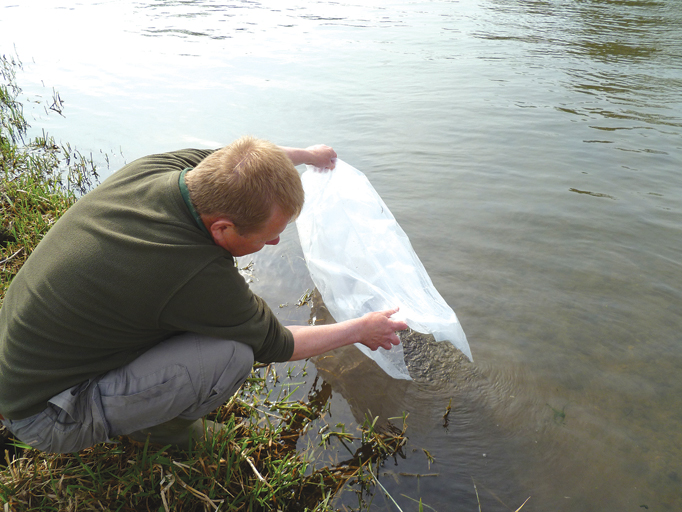 |
|
| |
Trev releases yet another bag of our roach into a carefully chosen spot on the Avon. The glow of satisfaction can probably be seen from space. It is simply a joy.
|
|
| |
 |
|
| |
|
|
| |
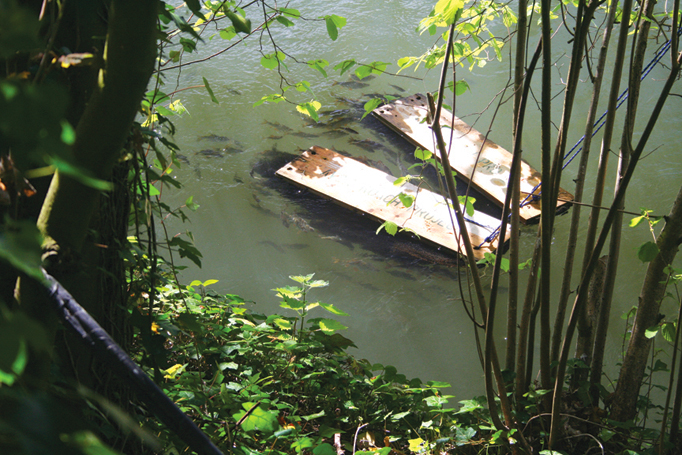 |
|
| |
Once again our spawning boards proved irresistible to the roach. We were, however, nearly caught out by the early spring. Ordinarily, the roach spawn in the third week in April; but this picture was taken in the first. Luckily, we think of nothing else at this time of year and were ready for them.
|
|
| |
 |
|
| |
|
|
| |
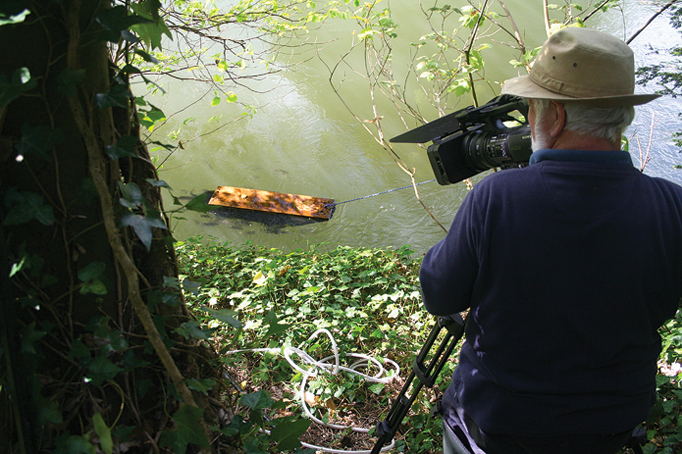 |
|
| |
And all caught on film by a very patient and determined Hugh Miles who spent up to four or five hours at a time just sitting with an underwater camera on a pole beside the spawning boards waiting for the roach to get used to it before starting to film. The delightful results of this fortitude can be seen in the film in our ‘Film Footage’ category of this site.
|
|
| |
 |
|
| |
|
|
| |
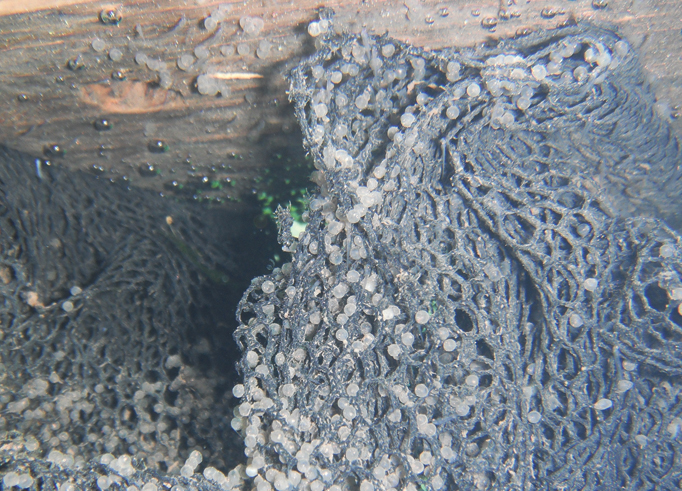 |
|
| |
Digital technology now allows us, with a simple little camera, to get underwater images. So with lots of clicking and flashing and time and effort, plus a modicum of determination, and a shed-load of beginners luck, we managed to get a picture of the roach in the eggs stuck to our netting on the brink of hatching, some actually hatching and some just a few seconds old. It will depend on the quality of your computer screen, but we hope you can see them.
|
|
| |
 |
|
| |
|
|
| |
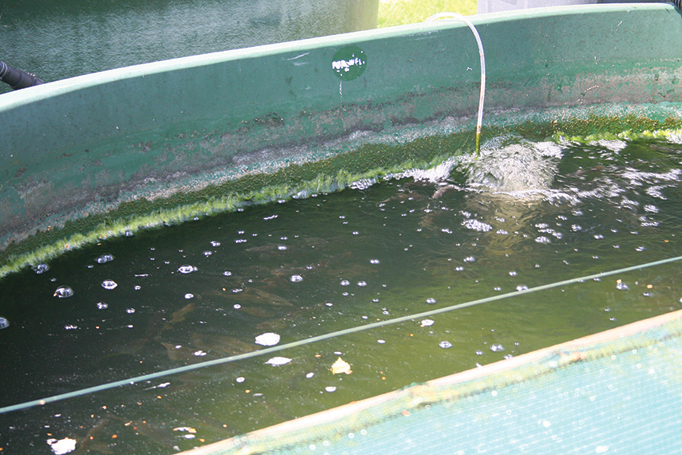 |
|
| |
In late April we were surprised to see the toddlers appearing to be feeding on the silk weed on the side of the tank in the aerator, but then our jaws hit the floor as we noticed they weren’t feeding at all, but actually spawning on the side of the tank. A spattering of eggs can just about be made out above the water line and silk weed.
|
|
| |
 |
|
| |
|
|
| |
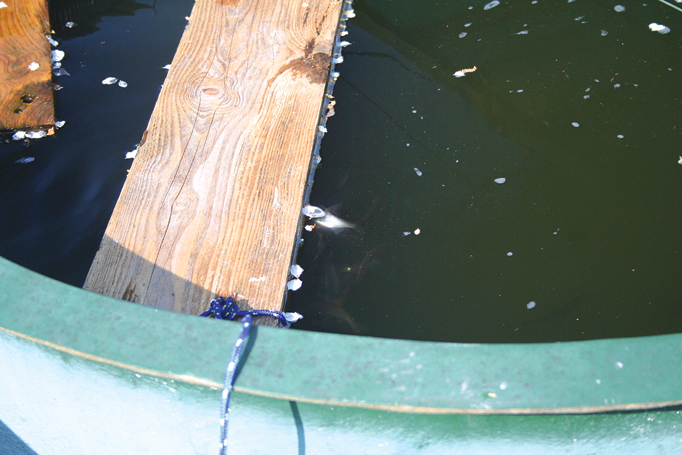 |
|
| |
We quickly placed a couple of spawning boards over them, and within five minutes they were spawning on them. Not all of them took part in the spawning as at three years of age, they are only just about on the brink of sexual maturity. The books say three for the males and four for the females. Not so here at Project HQ. We were delighted. And, this opens up a whole new range of possibilities for the project.
|
|
| |
 |
|
| |
|
|
| |
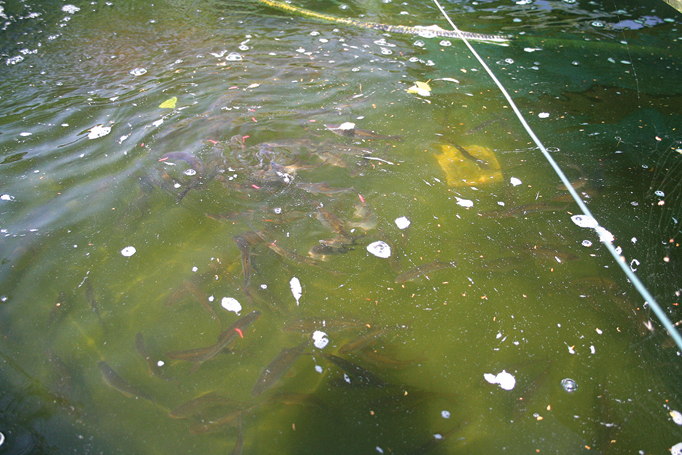 |
|
| |
The ‘toddlers’ being fed red maggots (kindly supplied every other week by Richard of Ringwood Tackle). The fish are now about five inches long. It is difficult to describe the feeling we get from being able to feed red maggots to our own Avon roach in our own tank that we have raised from eggs. Interestingly, we visited our stew over at Verwood, in which the water has cleared, and were pleasantly surprised to see our roach there at around the same size. These are destined for the river this autumn, once health checks and EA consents have been sorted.
|
|
| |
 |
|
| |
|
|
| |
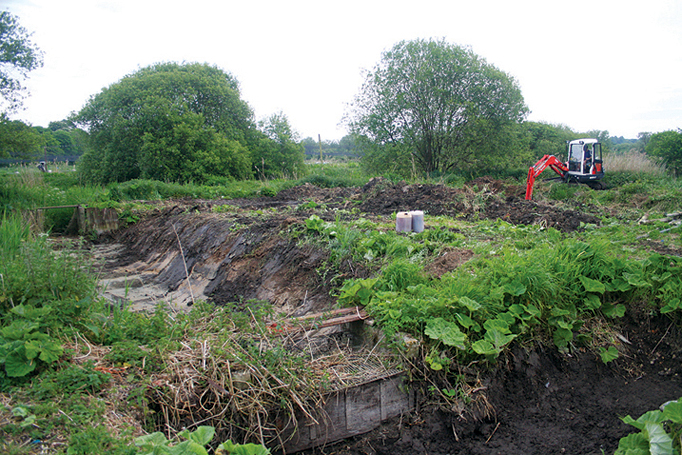 |
|
| |
On the 7th May 2011, in addition to those already holding our youngsters at Verwood in Dorset and Downton, just south of Salisbury, we started the excavation and reinstatement of four more stews at Bickton, near Fordingbridge, on the banks of the Avon, just a Wallis Cast from where the legendary Captain L.A.Parker used to stand and catch roach to a size, and in numbers, that dreams are made of. And, it is in these stews that we hope to grow thousands more of the young roach that will one day enable ours and the dreams of future generations of roach anglers to come true.
|
|
| |
 |
|
| |
|
|
| |
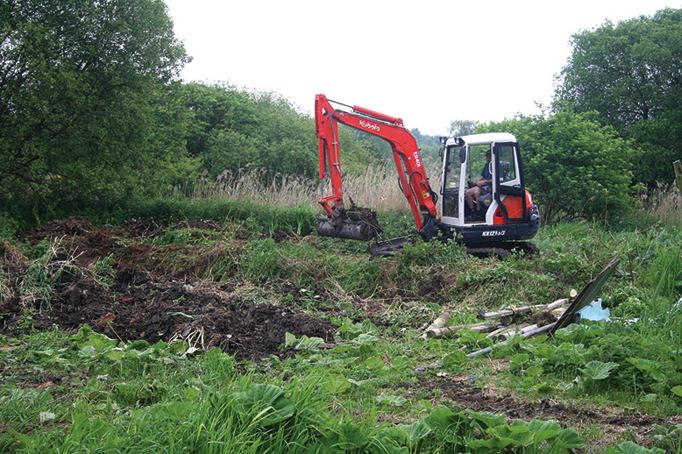 |
|
| |
We would like to thank all those who have made the restoration of the Bickton stews a possibility: Dickie and Martin Howell, who have led the restoration work with the help of Pete Reading; Steve Derby who suggested and organised the aluminium grilles and runners for the four inlets, and Andy Bailey of ‘Banner Plant’ and Mick Herbert of ‘Composite Cladding Systems’ for making and supplying them free of charge; Anton Aldridge and Nigel James of ‘Regents Timber’ who supplied the wood for the water level management of the inlets and outlets to the stews, and finally, to Damian Kimmins for driving the digger all weekend and making an absolutely first class job of the excavation of the stews.
|
|
| |
 |
|
| |
|
|
| |
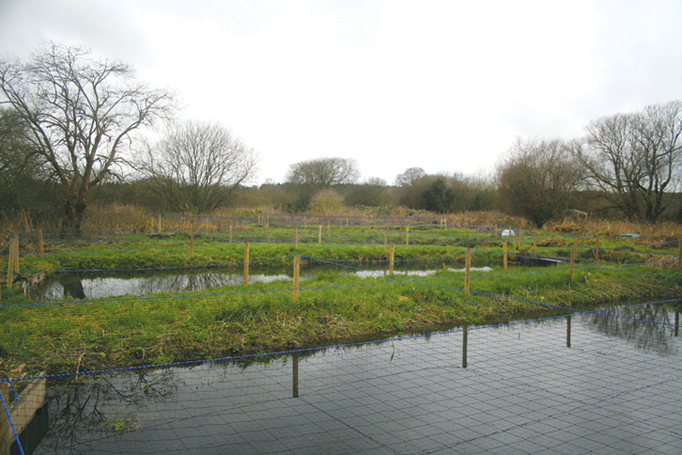 |
|
| |
The Bickton stews full of Avon water, netted and ready to be home (sanctuary) to the next lot of one year olds. We are delighted with these stews which have far exceeded all our expectations.
|
|
| |
 |
|
| |
|
|
| |
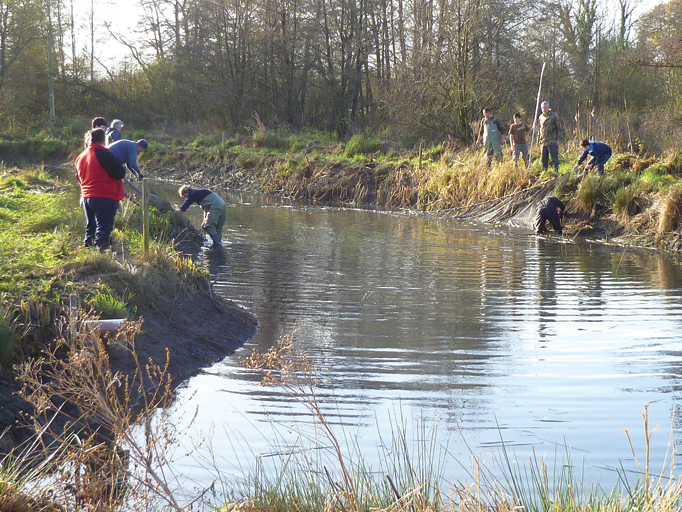 |
|
| |
Our stew over at Verwood, given to us by Christchurch Angling Club, was prepared for the first ever netting or our three year old roach for release into the Avon. The water level was dropped, the weed removed and the banks cleared. We’d like to thank Steve Jenner and Chris Harrison for their help and hard work.... Oh, and Warren for helping us drink the tea and eat the doughnuts. We’d also like to extend our sincerest thanks to the guys from CAC for helping on the day with the actual netting in early December 2011.
|
|
| |
 |
|
| |
|
|
| |
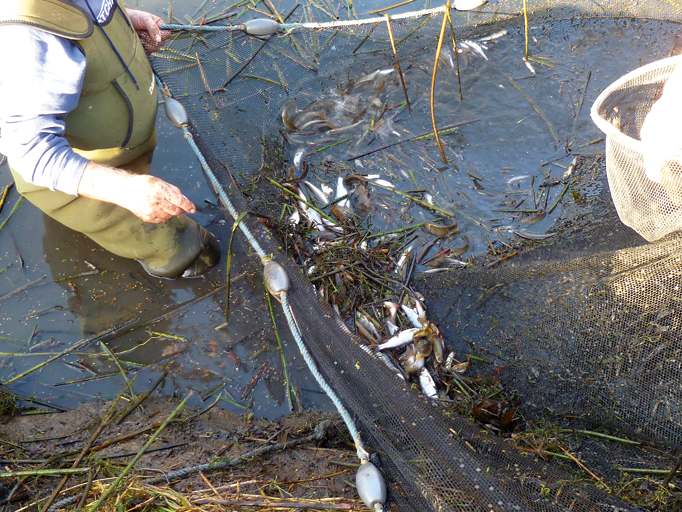 |
|
| |
The Verwood stew, along with the one at Longford which appears in some of the following sequences of pictures, are the ones that have been home to the first batch of our one year old roach, collected as spawn in 2008. We had suffered some losses at Verwood in the first year, possibly due to oxygen levels through the thunderous summer, so with hearts in our mouths we walked the banks of the stew trying to see our roach in a foot of clear water, but failed to see a single fish. We were both silent, dry-mouthed and white-knuckled. We dragged the net along the stew desperately trying to spot a roach. Then, half way along, there they were, and the result of the first sweep was this little lot. Our sighs of relief could have inflated a Zeppelin.
|
|
| |
 |
|
| |
|
|
| |
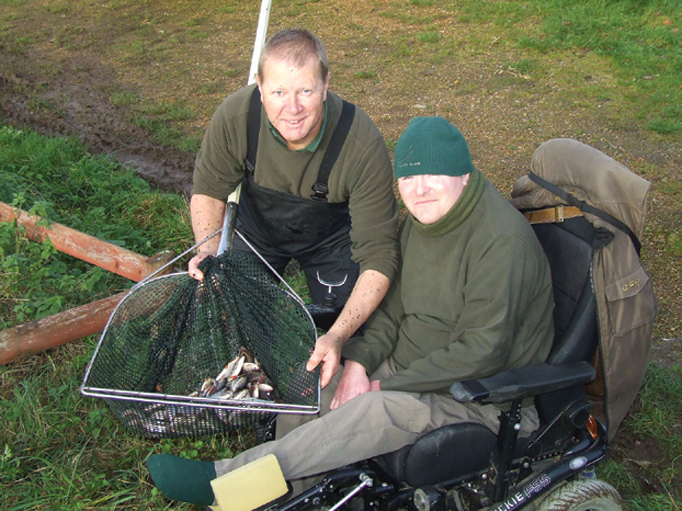 |
|
| |
Two very relieved and extremely proud boys with a net-full of our prime roach ready for the journey ‘home’ to the Avon. Our aim has always been to deliver prime, viable roach on the brink of maturity to the river so they can almost immediately begin to get on with increasing their own numbers, and the fish here confirmed that we had achieved just that, as they had spawned in the stew. As well as our adults, we caught a number of small, seven month olds, in the net.
|
|
| |
 |
|
| |
|
|
| |
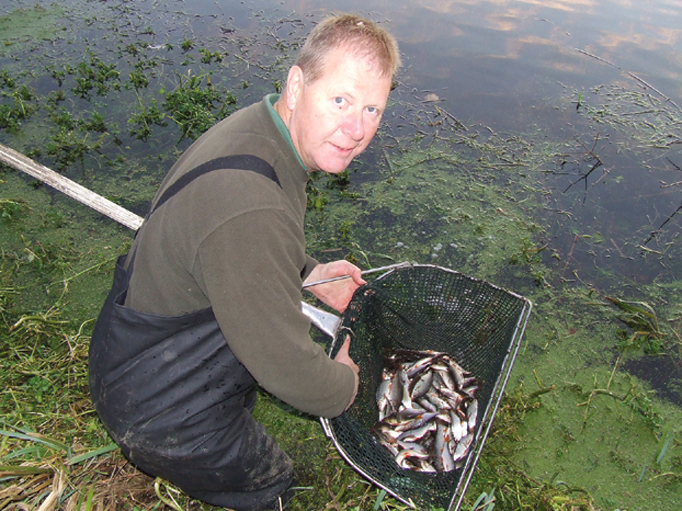 |
|
| |
And back they go into the Avon. The first net-full of roach are released into one of the four locations we chose to receive the initial boost. All locations have not only what we consider suitable habitat for our roach, but also have ideal spawning habitat within migration distance for our fish. We will be watching these locations with eager anticipation in April to see if our roach do their thing.
|
|
| |
 |
|
| |
|
|
| |
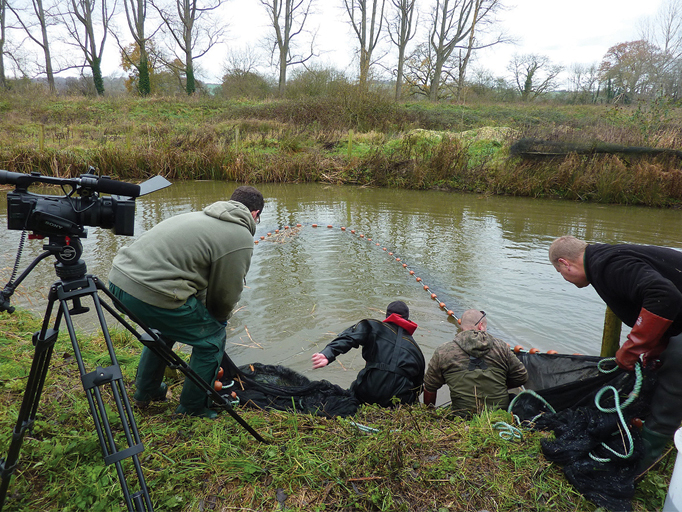 |
|
| |
The following week we repeated the task of netting and releasing roach from our Longford stew.
This time it was all caught on film by our great friend Hugh Miles.
|
|
| |
 |
|
| |
|
|
| |
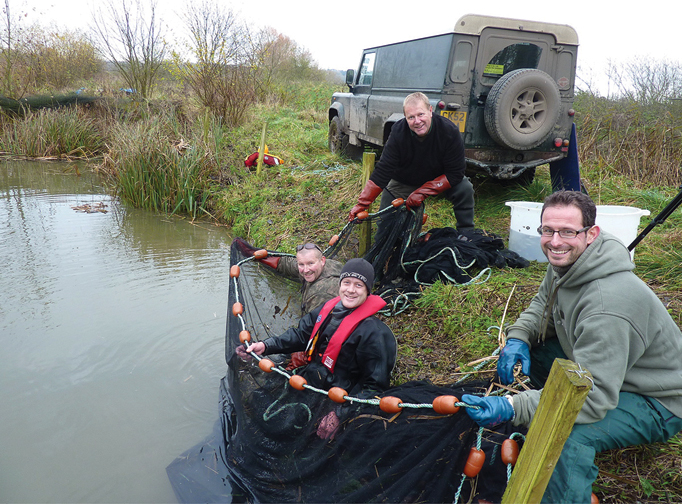 |
|
| |
The level of support from our friends was again breathtaking and we’d like to thank Jim Wreglesworth in the foreground, Jim Allan, in the red buoyancy aid and Pete Orchard. That’s our Trev at the back trying to look helpful. Jim Allan is a Fisheries Officer with the Environment Agency and he arranged it that we had all the equipment we could possibly need for the day; truck, net, water pumps, buckets, transportation tanks, the whole lot, courtesy of the EA, so we’d also like to thank them for their ongoing support.
|
|
| |
 |
|
| |
|
|
| |
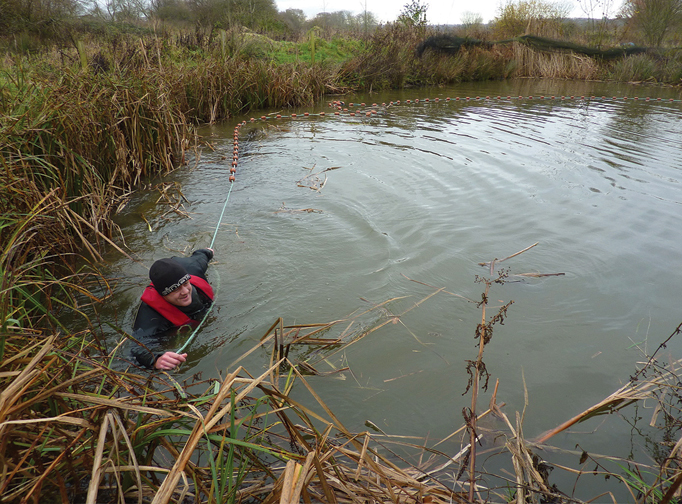 |
|
| |
If ever there was a man more suited to the job he does then we’ve never seen him. Not only did EA Fisheries Officer Jim Allan sort all the gear out that we needed for the day, but before we could comment on how frosty and bitterly cold the morning was, he’d slid into his dry suit, launched himself into the stew and was dragging the net round it. You could actually hear his hands throbbing with the cold. We think he must be part otter or tench or something. He certainly knows his stuff and it was a pleasure to have his company and guidance for the day.
|
|
| |
 |
|
| |
|
|
| |
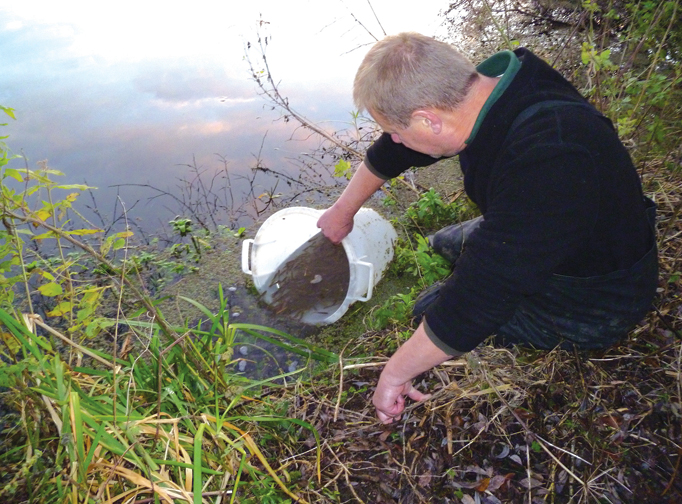 |
|
| |
Trev says goodbye to yet another barrel of roach as they slide calmly into the Avon. As the day matured so the feeling of pride and sense of achievement was very powerful in us all. Each net-full or barrel-full that went back into the river increased our feeling of hope that over time we really can make a difference. Indeed, we can comfort ourselves that as the first chapter in the Avon Roach Project closes and comes full cycle; maybe we have already made a difference. As far as the achievement of safely growing bucket-loads of mature Avon roach from spawn in our protected environment and returning them to the river, it’s ‘mission accomplished.’
|
|
| |
 |
|
| |
|
|
| |
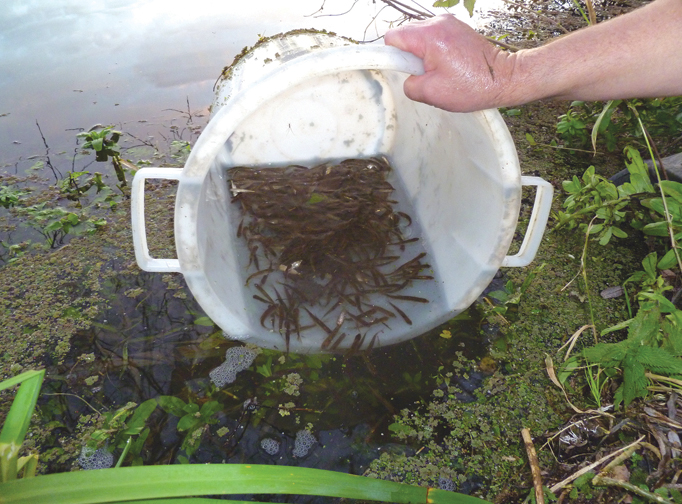 |
|
| |
Given the brutal nature of netting, sorting, transporting and releasing the small roach, casualties were extremely minimal, though inevitable. However, with us dramatically increasing the number of roach in the Avon that are able to spawn year on year, and as species survival in the wild is primarily a numbers game, we can be assured that we are doing nothing but significantly increasing their chances. The roach from the Longford stew were noticeably smaller than those from the Verwood one and this is due to the difference in stock density and food availability. Once in the river though, they’ll soon catch up. After all, food availability and stock density in the Avon, as it stands, won’t inhibit growth, that’s for sure.
|
|
| |
 |
|
| |
|
|
| |
 |
|
| |
|
|

